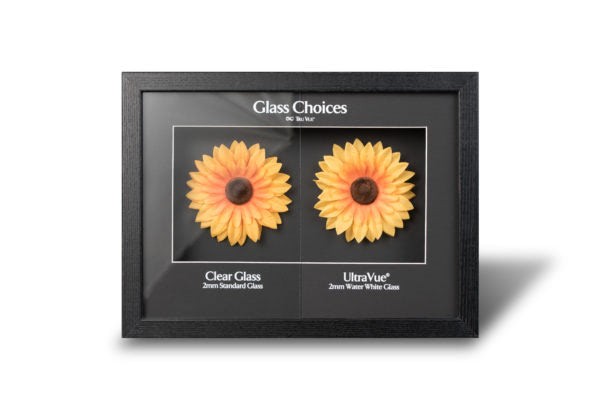Cleaning Museum Glass
UltraVue® UV70 Glass
Cut from a high-quality acrylic sheet that is both crystal clear and safe, filtering more than 70% of UV light. Cleaning museum glass is simple, as demonstrated in our step-by-step guide below.
Cut from a high-quality acrylic sheet that is both crystal clear and safe, filtering more than 70% of UV light. Cleaning museum glass is simple, as demonstrated in our step-by-step guide below.

Although our museum glass is cut from the highest quality glass, it is still susceptible to minor surface scratches that may affect its clarity and the appearance of the artwork. Do not use the cleaning products and solutions you would normally use on regular glass.
Also, please note that this guide refers to our high-quality museum glass and not to Styrene , often found in cheaper frames. Styrene is a very soft plastic that can easily scratch, whereas museum glass is much more durable.
Cleaning museum glass should not take longer than 1 minute .
Soft Microfiber Cloth: Ideal for gently removing dust and dirt. These cloths are lint-free and prevent scratches, making them safe for glass surfaces.
Pure Water: Using pure water to clean the glass is safe. Apply it with a soft cloth and wipe the glass. This should be enough to clean most surface stains and dirt.
Mild Glass Cleaner: If pure water is not enough, a mild glass cleaner that is ammonia-free and pH balanced can be used. Apply the cleaner to the cloth, not directly on the glass, and then wipe.
Avoid Alcohol-Based Cleaners: Alcohol or other alcohol-based cleaners can damage the special coatings on the glass, so they should be avoided.
Circular Motions: Use circular motions while cleaning the glass to minimize streaks and marks.
Professional Products: Opt for professional cleaning products specifically formulated for museum glass. These products provide effective cleaning without compromising the glass properties.